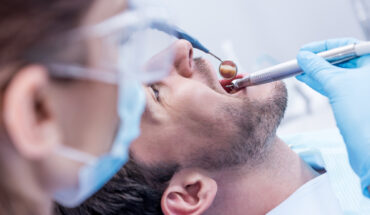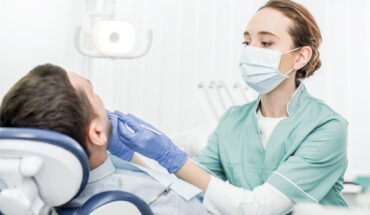Oral cancer can appear anywhere in the mouth, including the inside of the cheeks and the gums. It is a type of head and neck cancer.
It often comes under the category of oral and oropharyngeal cancer. Oropharyngeal cancer affects the back of the mouth and the lining of the throat.
According to the American Cancer Society (ACS), around 53,000 Americans will receive a diagnosis of oral or oropharyngeal cancer in 2019.
The average age at diagnosis is 62 years old, but around 25% of cases happen before the age of 55, say the ACS. The disease is more likely to affect males than females.
The main risk factors for oral cancer are tobacco and alcohol use. Smokers are potentially at 5-10 times the risk of developing oral cancer compared to their lifelong non-smoking counterparts. Additionally, smoking and alcohol use is believed to have a synergistic effect, such that those who both smoke and drink may be at 15 times the risk of developing oral cancer. Cessation of smoking and alcohol can significantly bring down an individual’s risk of cancer; for example, studies have indicated that an ex-smoker who has quit for greater than 10 years has the same relative risk of oral cancer as a lifelong non-smoker.
Oral Cancer Symptoms
In the early stages, there are often no signs or symptoms of oral cancer.
Smokers and heavy drinkers should have regular checkups with the dentist, as tobacco and alcohol are the biggest risk factors for mouth cancer.
Your general or emergency dentist may be able to spot any signs at an early stage.
Signs that cancer could develop eventually include:
Leukoplakia: This is where there are white patches in the mouth that do not disappear when a person rubs them.
Oral lichen planus: This is where there are areas of white lines with a reddish border, possibly with ulceration.
Many oral lesions may be precancerous. They do not mean that someone has cancer, but people should speak to their doctor about any changes that occur in the mouth.
Monitoring changes may help spot mouth cancer in the early stages when it is easier to treat.
Mouth Cancer Symptoms
If oral cancer develops, a person may notice:
– patches on the lining of the mouth or tongue, usually red or red and white
– bleeding, pain, or numbness in the mouth
– mouth ulcers or sores that do not heal
– a lump or thickening of the gums or lining of the mouth
– loose teeth with no apparent reason
– poorly fitting dentures
– swelling in the jaw
– a sore throat or feeling that something is stuck in the throat
– a hoarse voice
– difficulty chewing or swallowing
– difficulty moving the tongue or jaw
Having any of these symptoms does not mean that a person has mouth cancer, but it is worth checking with a doctor.
Oral cancer can appear anywhere in the mouth, including the inside of the cheeks and the gums. It is a type of head and neck cancer.
It often comes under the category of oral and oropharyngeal cancer. Oropharyngeal cancer affects the back of the mouth and the lining of the throat.
According to the American Cancer Society (ACS), around 53,000 Americans received a diagnosis of oral or oropharyngeal cancer in 2019.
The average age at diagnosis is 62 years old, but around 25% of cases happen before the age of 55, say the ACS. The disease is more likely to affect males than females.
Symptoms
In the early stages, there are often no signs or symptoms of oral cancer.
Smokers and heavy drinkers should have regular checkups with the dentist, as tobacco and alcohol are risk factors for oral cancer.
The dentist may be able to spot any signs at an early stage.




